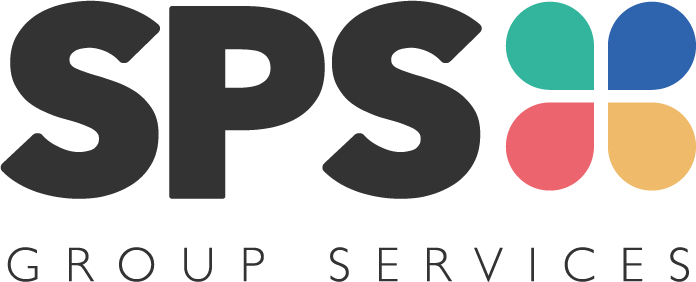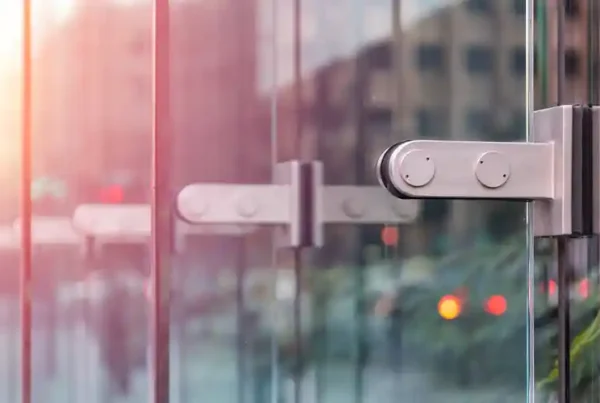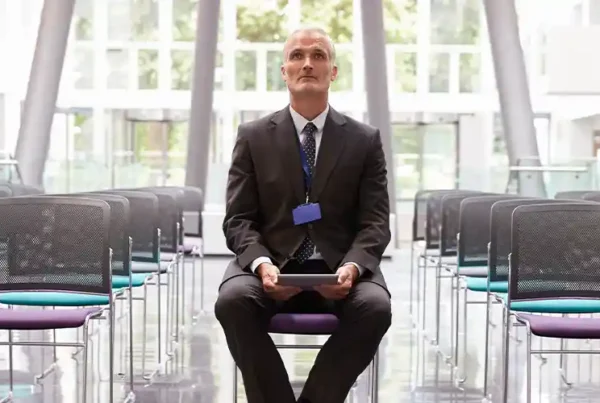Where sustainability and environmental responsibility are more than just buzzwords, eco-friendly cleaning has emerged as a paramount concern for facility managers. This transition towards green cleaning practices isn’t just a nod to environmental stewardship but a comprehensive approach to maintaining workplace hygiene that benefits both the planet and the people inhabiting these spaces. It’s about harnessing the power of advanced, energy-efficient technologies and eco-friendly cleaning products to create a healthier, more sustainable environment for employees, visitors, and the broader community.
Unpacking the Essentials of Eco-Friendly Cleaning
Eco-friendly cleaning represents a transformative shift from traditional methods, embracing a holistic ethos that permeates every aspect of the cleaning cycle. It’s a narrative that extends beyond merely selecting products labelled ‘green’. At its core, it involves a meticulous selection process where products are vetted not just for their lack of harmful chemicals, but for their production, use, and disposal processes, ensuring they tread lightly on our planet.
These products eschew the toxic substances found in their conventional counterparts, substances known for their deleterious effects on both air and water quality. By doing so, they forge a path towards a cleaning regimen that respects the environment, causing minimal disruption to the ecosystems we cohabit with.
But the essence of eco-friendly cleaning isn’t confined to the products used; it’s equally about embracing cutting-edge technologies. These technologies, marked by their energy efficiency, demand less from our resources, aligning with the overarching goal of reducing our carbon footprint. The integration of such innovations ensures that the pursuit of cleanliness does not come at an environmental cost, striking a delicate balance between efficacy and ecological sensitivity.
In this context, the role of water and energy assumes paramount importance. Eco-friendly cleaning seeks to minimise the consumption of these vital resources, leveraging concentrated formulas and advanced equipment that deliver optimal results with minimal waste. This not only enhances the sustainability of cleaning practices but also sets a new standard in operational efficiency, challenging and inspiring facilities to rethink the way cleanliness is achieved in a world increasingly conscious of its environmental footprint.
The Environmental and Health Perks of Going Green
Embracing eco-friendly cleaning transcends mere environmental advocacy, presenting a multifaceted boon to both the planet and its inhabitants. At the environmental level, the shift towards green cleaning methodologies significantly curtails the release of pollutants into the atmosphere and our waterways, contributing to a reduction in our collective carbon footprint. Such practices inherently champion the conservation of resources, ranging from water to energy, hence playing a vital role in mitigating the effects of climate change. This approach ensures a diminishment in the strain placed upon our planet’s delicate ecosystems, fostering a healthier, more resilient natural world.
Parallel to the environmental advantages, the health benefits of adopting green cleaning practices are profoundly impactful. By sidestepping the use of harsh, chemical-laden products, we mitigate the risk of exposing facility occupants to substances that can precipitate a spectrum of adverse health outcomes. The reduction in the use of these noxious chemicals translates into a notable improvement in indoor air quality, heralding a safer, more conducive atmosphere for both physical and mental well-being. Employees and visitors alike are shielded from potential irritants and pollutants that can elicit skin, eye, and respiratory conditions, thereby engendering a more hospitable and productive environment.
Thus, the journey towards green cleaning encapsulates a commitment not only to environmental preservation but also to nurturing a setting that prioritises the health and safety of its community. It is an investment in a future where the symbiosis between human health and environmental health is recognised and revered, paving the way for a more sustainable and thriving planet.
Advanced Technologies Paving the Way
In the realm of green cleaning, the role of cutting-edge technology cannot be overstated. It serves as a linchpin for enhancing the efficiency and efficacy of eco-friendly cleaning practices, thereby catalysing the shift towards more sustainable operations. Amongst these technological advancements, energy-efficient apparatus stands out, markedly reducing the energy footprint of cleaning operations. Such devices, designed with precision, allow for a thorough cleaning without the reliance on environmentally detrimental chemicals.
Furthermore, the advent of automation and robotics in the cleaning sector has revolutionised the approach to maintaining cleanliness. These innovations offer a twofold benefit: minimising human error and reducing the physical strain on cleaning staff. The precision brought about by automated systems ensures a consistently high standard of cleanliness, a non-negotiable for any facility keen on upholding its sanitation standards.
Equally pivotal are the developments in the formulation of cleaning agents themselves. The progression towards concentrated solutions not only diminishes the volume of chemicals used but also cuts down on packaging waste, reinforcing the commitment to environmental stewardship. These formulations, potent yet devoid of harmful substances, exemplify the harmonious balance between human health and ecological well-being.
To encapsulate, the infusion of advanced technologies in the domain of eco-friendly cleaning is not merely a trend but a foundational shift. It propels the cleaning industry towards a future where operational efficiency and environmental responsibility coalesce, embodying a holistic approach to sustainability. In embracing these technological strides, facilities are not just aligning with current best practices but are setting the stage for a greener, cleaner future.
Green Cleaning’s Role in Sustainable Business Models
In an era where sustainable practices are not just admired but expected, the integration of green cleaning within the operational strategies of businesses emerges as a vital component. This shift towards eco-consciousness in facility management transcends mere environmental activism, serving as a tangible demonstration of a company’s commitment to a sustainable future. The essence of green cleaning, with its focus on minimising environmental impact through the use of eco-friendly products and energy-efficient technologies, aligns seamlessly with the principles of sustainable business models. These models are designed to operate within the limits of our natural world, ensuring that resources are utilised judiciously and with foresight towards long-term viability.
The adoption of green cleaning practices signals to consumers, employees, and stakeholders alike a company’s dedication to not only safeguarding the planet but also prioritising the health and well-being of its community. This approach has the added advantage of potentially unlocking economic efficiencies, as the reduction in resource consumption and the embrace of innovative technologies can lead to considerable cost savings. Moreover, in a marketplace where environmental responsibility increasingly influences consumer choices, businesses that proactively incorporate green cleaning into their operations gain a competitive edge. They not only meet the current demand for sustainability but also anticipate future trends, ensuring resilience and relevance in a rapidly evolving commercial landscape.
Engaging with green cleaning thus becomes a strategic decision, one that weaves environmental stewardship into the fabric of corporate identity. It represents a forward-thinking alignment with sustainability, a concept that is becoming an indispensable pillar of modern business philosophy. Through this lens, green cleaning is not just an operational choice but a cornerstone of sustainable business practices that resonate with a broader societal shift towards environmental responsibility and ethical governance.
Implementing Green Cleaning in Your Facility
Embarking on the journey towards green cleaning within your facility necessitates a well-considered strategy and an unwavering dedication to this ethos. The initial step involves a meticulous review of your current cleaning protocols to pinpoint areas where enhancements can be made. It’s about scrutinising every corner, every product on your shelf, and every methodology employed, through a green lens.
Following this introspective analysis, the next course of action is to establish connections with suppliers renowned for their commitment to eco-friendly cleaning solutions. These suppliers should not only provide products but also serve as partners in your green transition, offering insights and continuous support.
Equally critical is the investment in staff training focused on the latest in eco-friendly practices and technology usage. Such training ensures that the adoption of green cleaning methods is not just top-down but is embraced and understood across the board. Staff empowerment through knowledge and skills is pivotal to the successful integration of these practices.
Communication plays a central role in this transformative phase. It’s about crafting a narrative around the shift to green cleaning that resonates with everyone within the facility, from the top echelons to the daily visitors. Highlighting the why behind the change can foster a collective commitment to a healthier, more sustainable environment.
This transition is not a sprint but a marathon. It involves ongoing engagement with new advancements in green products and technologies, and a readiness to fine-tune practices in response to feedback and evolving environmental standards. By adopting such a proactive and comprehensive approach, your facility not only contributes to the global sustainability effort but also sets a benchmark in eco-conscious facility management.
Challenges and Solutions in Green Cleaning Adoption
Embarking on the path towards green cleaning is not devoid of its obstacles. The initial financial outlay for eco-friendly products and state-of-the-art technologies often eclipses that of conventional alternatives, presenting a significant barrier for many. Coupled with this financial hurdle is a psychological one: resistance to change. This resistance can manifest among staff and stakeholders alike, rooted in a comfort with the status quo and apprehensions about the efficacy of green alternatives.
Addressing these challenges demands a multifaceted strategy. Foremost, it is imperative to illuminate the broader picture, highlighting the long-term advantages that eco-friendly cleaning confers, not just environmentally but economically as well. The emphasis on the potential for cost savings over time, through reduced resource consumption and enhanced efficiency, can facilitate a shift in perspective, viewing initial expenses as an investment in future sustainability.
Further, navigating through the resistance to change involves an educational endeavour. It’s about fostering an understanding and appreciation for the environmental and health benefits of green cleaning, thereby cultivating a collective commitment to this transition. Engaging in open dialogues, offering workshops, and showcasing success stories can be instrumental in changing hearts and minds.
Governments and industry bodies often provide incentives and subsidies for adopting eco-friendly practices. Actively seeking out and leveraging these financial supports can alleviate some of the economic pressures and serve as an additional incentive for making the transition.
Phasing in eco-friendly cleaning practices gradually allows for a smoother adjustment period. It offers the opportunity to test and learn, adjusting strategies based on real-world experiences. This iterative approach ensures that the transition is not only sustainable in environmental terms but is also practicable and palatable for all involved.
The Future is Green: Keeping Ahead of the Curve
The trajectory of cleaning methodologies is undeniably shifting towards a greener paradigm. As the canvas of technological innovation broadens and societal norms evolve, the imperative for facility managers to remain abreast of the advancements in eco-friendly cleaning becomes ever more crucial. This endeavour necessitates a voracious appetite for knowledge and an unwavering commitment to pioneering practices that diminish environmental footprints while bolstering health and safety.
In the vanguard of this green revolution, the exploration of emerging products, groundbreaking technologies, and revolutionary methods is paramount. Such proactive exploration is not merely about aligning with current trends but is a strategic foresight into future-proofing operations. The potential for these innovations to further mitigate environmental impact while enhancing the well-being of occupants is immense.
Staying ahead of the curve also implies a readiness to adapt, to seamlessly integrate new findings that promise greater sustainability into existing frameworks. This adaptability ensures not only compliance with prospective regulations but positions a facility as a beacon of sustainability, setting a benchmark in the realm of eco-conscious facility management.
Moreover, this journey is underpinned by a dialogue with the broader community—sharing insights, successes, and lessons learnt. It is through this collective wisdom and shared vision for a greener future that the path towards sustainable cleaning practices becomes less arduous and more enriching.
In essence, navigating the green wave is a commitment to perpetual growth and learning, an acknowledgement that the future of cleaning is intrinsically linked to the health of our planet and its inhabitants. By fostering an ethos of innovation and adaptability, facilities can not only meet but exceed the environmental and health standards of tomorrow, crafting a legacy of sustainability for generations to come.




